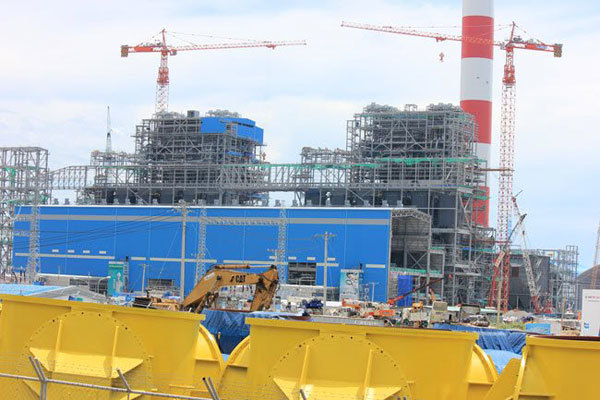Despite international efforts and decades of discussions, tackling greenhouse gas emissions remains a difficult task.
| As Vietnam shows rapid growth in renewable energy in Vietnam, recently considered to have the third largest capacity to install solar equipment in the world, after the United States and China in 2020 … |
Greenhouse emissions continue to increase without waiting for an international consensus to emerge. In 2014-2016, emissions stabilized due to weak growth. However, they increased again in 2018 (+ 2.7%) and 2019 (+ 0.6%).
Covid-19 led to a drop in energy demand, so that emissions from the energy sector fell 5.8%, the highest since World War II and equivalent to the total emissions from the ‘European Union (EU). However, as the global economy is expected to rebound this year, tackling greenhouse gas emissions will be a challenge.
The personal interest behind
Self-interest explains the slowness of progress. Many individuals and organizations remain wary of scientific forecasts of greenhouse gas emissions. Among them were former US President Donald Trump and his administration. A 2019 survey by Yale College shows that 48% of voters in the United States would not support the president’s statement that global warming is an urgent issue if lawmakers did not act.
In addition, greenhouse gas emissions and climate change transcend borders. Many will therefore wait for others to act first.
Economic imperatives also play a crucial role. Initiatives to reduce emissions meet resistance from developing and even developed countries, as poor countries are hit hardest by such programs.
If the world embraces ideas like arguably the most reasonable carbon tax, electricity prices will rise dramatically over the next decade. The same goes for gas, which weighs heavily on poor households, developing countries and emerging economies. It should be remembered that billions of people still do not have access to electricity.
 |
| … The country is still heavily dependent on thermal electricity production. – SGT Photos: Thanh Hoa |
Interest negotiations
This explains why countries like India (the fourth largest contributor to global emissions, after China, the United States and the EU) and Africa are not part of the emission reduction agreements. Given the need for growth to lift citizens out of poverty, they cannot let emissions reduction take precedence. In addition, they argue that it is the responsibility of developed countries, which have benefited enormously from non-renewable energies, to lead the fight against greenhouse gas emissions.
It is therefore important to provide financial support to developing countries struggling with the carbon tax. However, large-scale funding is unrealistic. As countries try to consolidate the budget and reduce the deficit, negotiations will continue – developing countries will expect support while developed countries will call for voluntary participation in climate change campaigns.
Vietnam in the midst of negotiations
Previously, as part of the Paris agreement, Vietnam pledged to reduce its emissions by 8% by 2030, with a possibility of 25% if there is international support. Vietnam is not among the group of over 100 countries that promise to achieve net zero emissions in the past 10 years.
The 8% decrease is more indicative, to show Vietnam’s commitment to a global effort. The 25% mentioned for the scenario where international support is available deserve to be underlined. Vietnam will only voluntarily reduce its emissions if help is available.
Recently, Vietnam increased these figures to 9% and 27% respectively. This arguably stems from the rapid growth of renewables in Vietnam, recently considered to have the third largest capacity to install solar power equipment in the world, after the United States and China in 2020.
However, 9% is just a number of papers given Vietnam’s development needs. Thermal power plants running on fossil fuels are unlikely to obtain global financing.
Deplorable electricity transport and storage networks have led to excess solar energy. Vietnam’s ability to cut its emissions by 27% depends on the free financial support it receives to boost electricity transport and storage (nearly $ 33 billion is needed to expand the national electricity grid, according to the Power Development Master Plan 8).
While Vietnam waits for international partners to pour money to help it with the remaining 18% (27% – 9%), Vietnam must continue to rely on thermal power plants to ensure reasonable access to electricity. . These projects will be financed mainly by national developers. However, commercial banks will increasingly embrace global trends and say no to fossil fuel based power projects.
In the worst case – the 18% cannot be sold successfully and the thermoelectric plants are in difficulty – the master plan for the development of electricity 8 will also be hampered.
Source: SGT

Vietnam signs emissions reduction purchase agreement
Vietnam will be the fifth partner of the Forest Carbon Partnership Fund and the first in the Asia-Pacific region to sign an emissions reduction purchase agreement, said Deputy Minister of Agriculture and Rural Development Ha Cong Tuan.

Pool all efforts for the carbon market
The Prime Minister instructed the ministries and agencies concerned to draw up a draft regulation introducing the forest environment and CO2 indices in accordance with the regulations that localities developing industrial projects

